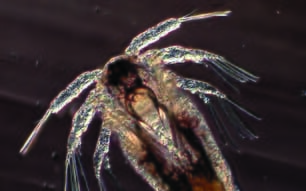Now, Florida State University scientists have challenged earlier research on the effects of sharks and rays on oyster and shellfish industries off the Eastern coast of the USA. This is not the first time that without a full understanding of the function of apex species in trophic cascades, bad species management decisions can be made.
As published recently, challenging previous research published in 2007, the authors warn that: “Using terrestrial systems as models, it has been plausibly predicted that large sharks, as apex predators, may exert top-down influences on prey populations through direct predation or by triggering risk-averse behaviors that affect survivorship. However, studies … have suggested that sharks may not be strong regulators of community structure in large marine ecosystems. The relatively high diversity, functional redundancy, and complexity of marine food webs may attenuate potential cascading effects from the depletion of predators.”
The earlier Science paper supported the notion that shark population declines led to rising populations of cownose rays (Rhinoptera bonasus), which, it was argued, were then responsible for the collapse of oyster and shellfish industries along the US Atlantic coast.
This was then being used to “justify the development of a predator-control fishery for cownose rays”, resulting in the "Save the Bay, Eat a Ray" campaign in Chesapeake Bay, to supposedly reduce predation on commercial bivalves. Moreover, this example of a trophic cascade has been widely cited as an important example of a marine trophic cascade in action (e.g. see references) .
But, as Dean Grubbs, who is the lead author of the new study, said: "Our research presents clear evidence that directly refutes the 2007 Science study … For instance, the declines in predatory sharks presented in the 2007 study are not nearly as severe as was reported, and the increases in cownose ray populations are biologically unrealistic.”
Not only were shark populations not nearly as depleted as was reported, due to successful management, but most species have recovered or are recovering. Moreover, they also pointed out that it is physiologically impossible for cownose rays to increase at the rates suggested by the 2007 study. Rays are slow-maturing fish that do not reproduce until they are at least six or seven years old, and females only produce one offspring per year.
"The timing just does not match," Grubbs said. "Oyster and bay scallop populations declined dramatically decades before the supposed increase in cownose rays due to many factors including overharvesting, disease, pollution and habitat loss. Cownose rays have been used as a convenient scapegoat and while they may negatively affect some efforts to restore harvestable shellfish stocks, they were not the cause of the collapse of shellfish fisheries as the 2007 study claimed."
Co-author Charles Cotton, argued that: "Evidence-based management decisions are critical in preventing overfishing, as we've seen many times in the past with unregulated fisheries for other species of sharks and rays".
But, as Cotton said: "One of our primary concerns that led to this study was the effect of a fishery with no harvest limits on a species with low reproductive rates, particularly as this was being incorrectly touted as an 'environmentally responsible' seafood choice".
The Florida-based scientists say that: “Cownose rays are natural predators in these systems and may inhibit some efforts to mitigate for shellfish stock declines that resulted from overfishing, disease, and habitat loss, but there is no evidence that cownose rays were the cause of the declines, but rather have been portrayed as scapegoats for these declines.”
Moreover, “the unregulated ‘Save the Bay, Eat a Ray’ fishery may be detrimental to this population of slow-growing elasmobranchs with limited intrinsic growth rate and rebound potential. Based on the life history of the cownose ray, it is unlikely the species can withstand high levels of fishing mortality without substantial population declines.”
It’s a cautionary tale, illustrating that evidence-based management of fisheries is crucial.



